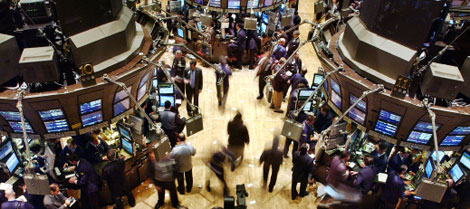Of course, it would be great (if you’re long U.S. stocks) if today’s bounce marked the beginning of a recovery to the record highs in place before last week’s plunge.
But…
It’s very early in this bounce. It’s typical for a bounce to take back about 50% of the loss from a quick drop like that of last week. Today, the NASDAQ Composite Index was up 3.26%. That’s a hefty gain but still short of the typical bounce. The NASDAQ Composite Index was up 9.92% for 2018 at the close on March 12. We’ve got a way to go before we move above the 50% recovery typical of a bounce and can start looking for a recovery to/beyond old highs.
It’s the end of the quarter, which would be time for first quarter portfolio window dressing anyway–but it’s even more likely since this is a short trading week. (U.S. markets are closed on Friday.) Look at some of the stocks that were up most strongly today: Amazon (AMZN) ahead 4.03%; Apple (AAPL) ahead 4.8%; Microsoft (MSFT) ahead 7.5%; Netflix (NFLX) ahead 6.45%; Nvidia (NVDA) ahead 4.94%; Adobe Systems (ADBE) ahead 6.46%; Autodesk (ADSK) ahead 4.84%. These were not only some of the big winners for the first quarter of 2018 but they were recognizable big winners. Put one of these in a portfolio at the end of a quarter and a money manager has a chance to convince some investors that the manager was making all the right moves in the first quarter.
The optimism today is based on some very thin reeds. Come on, we’re supposed to believe Treasury Secretary Steve Mnuchin when he makes reassuring sounds about trade negotiations with the Chinese in an interview right after he’s demonstrated that his staff didn’t even bother to prep him about the constitutional history of a presidential line item veto? We’re supposed to be reassured about the outcome of the current standoff between the United States and China because the Trump Administration, after talking big about steel and aluminum tariffs, looks likely to give exemptions to every steel and aluminum producer except for China?
I sometimes think that Wall Street analysts have a gene for optimism after a market downturn.



Today–Monday, April 2: There goes the neighborhood. NASDAQ joins the correction, in my opinion
Of course, this is a president with a history of doubling down on positions too.
Weekend devoted to cranking Turkey results. Will be up next week.
I wouldn’t be surprised if there was a real softening of the tariffs push. If Trump takes the stock market performance as a measure of his presidency, then last week probably got his attention. I suspect he is negotiating, rather than dead-set on a trade war. And if trade-war fears drove lots of last week’s decline, then a bit of back-off from the brink makes a rally logical. But I’m just guessing…
Hi Jim – Any word on the results from the Turkey contest? Thanks.
A point of confusion, is that while Dow charts are indicating a down trend, Nasdaq charts are not — the last Nasdaq low was higher than previous low. Some names such as Amazon are already above their previous low.